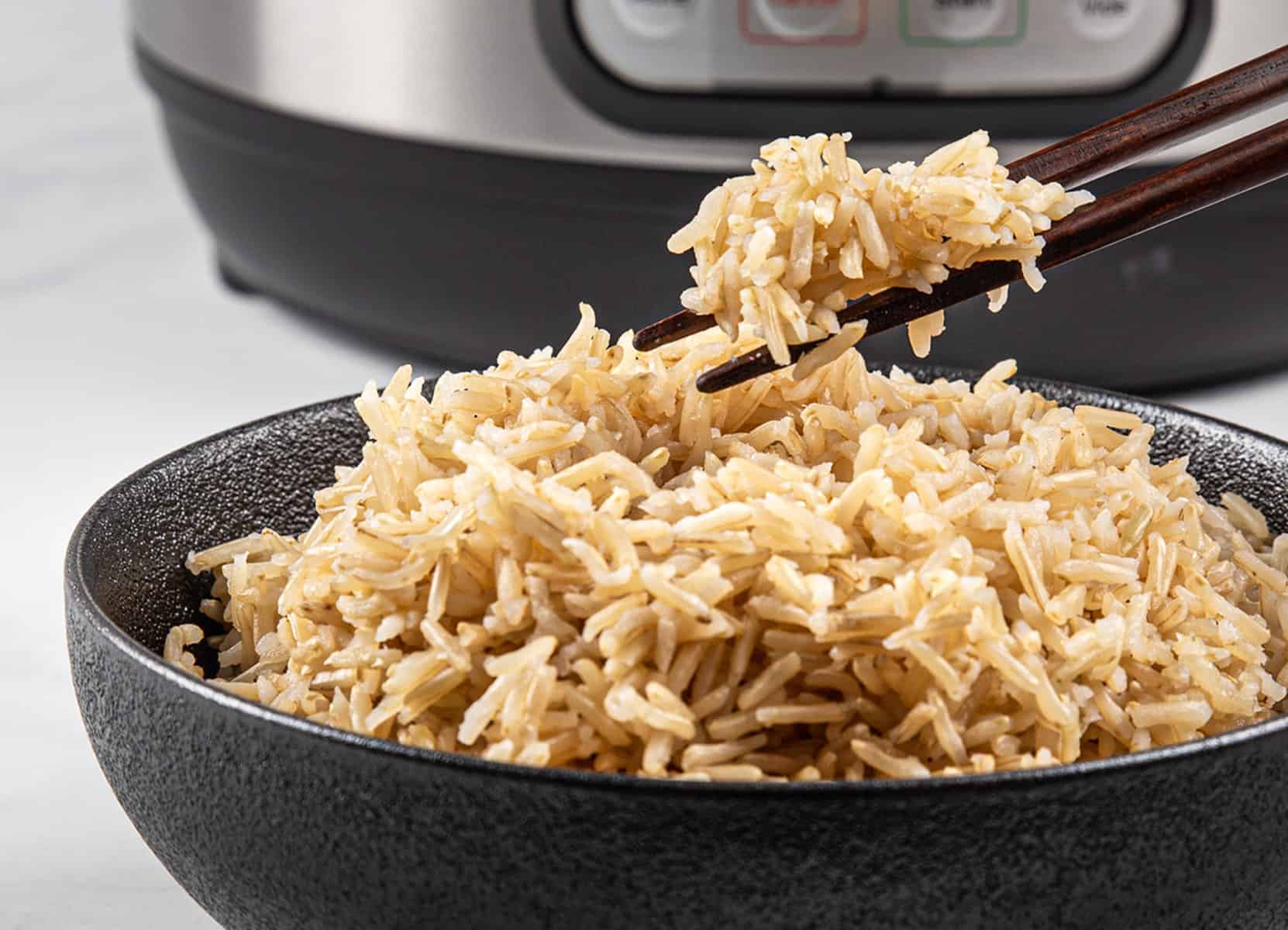
Basmati rice is a captivating grain that has been cultivated for centuries in the Indian subcontinent. Known for its distinctive aroma and long, slender grains, Basmati rice has become a staple in many cuisines around the world. From biryanis to pilafs, this fragrant rice adds a delightful flavor and texture to a wide variety of dishes.
In this article, we will explore 16 fascinating facts about Basmati rice. From its origins and cultivation methods to its nutritional value and cooking techniques, we will delve into the rich history and unique characteristics of this beloved rice. So grab a bowl of cooked Basmati rice and join us on this culinary journey!
Key Takeaways:
- Basmati rice is a long-grain rice with a unique aroma and delicate flavor, primarily grown in the Indian subcontinent. It’s versatile, healthy, and holds cultural significance in Indian and Pakistani traditions.
- Basmati rice has a protected geographic indication status, meaning it can only be labeled as Basmati if grown in specific regions of India and Pakistan. It’s widely used in various Asian cuisines and is aged to develop its distinct aroma and flavor.
Basmati Rice Origin
Basmati rice is a long-grain rice that is primarily grown in the Indian subcontinent. It is known for its distinctive aroma and delicate flavor.
Aromatic Grain
One of the unique characteristics of Basmati rice is its aromatic fragrance, often described as a blend of nutty and floral notes.
Long and Slender Grains
The grains of Basmati rice are long and slender, with a slender kernel at one end and a thicker kernel at the other. This gives the rice its characteristic appearance.
Cultivation and Harvest
Basmati rice is traditionally cultivated in the fertile soil of the Himalayan foothills. It requires specific temperature, humidity, and soil conditions for optimal growth.
Authenticity and Geographic Indication
Basmati rice has a protected geographic indication (PGI) status, which means that only rice grown in specific regions of India and Pakistan can be labeled as Basmati.
Cooking Method
Basmati rice is best cooked by the absorption method, where the rice absorbs all the water during cooking, resulting in fluffy and separate grains.
Versatility
Basmati rice is a versatile grain that can be used in a variety of dishes, including pilaf, biryani, fried rice, and even desserts.
Health Benefits
Basmati rice is low in fat and cholesterol and contains essential vitamins and minerals. It is also a good source of energy and dietary fiber.
Long Grain Rice
Basmati rice is classified as a long-grain rice due to its slender grains, which tend to stay separate and fluffy when cooked.
Export Value
Basmati rice is one of the most exported varieties of rice in the world, with a high demand in international markets.
Basmati Rice and Cuisine
Basmati rice is a staple in Indian and Pakistani cuisine and is commonly used in traditional dishes such as biryani, pulao, and kheer.
Aging Process
Basmati rice is often aged for a specific period of time before it is sold. This allows the rice to develop its distinct aroma and flavor.
Basmati Rice Grades
Basmati rice is classified into different grades based on its length, purity, and quality. The most prized grade is known as “sella” or “golden” Basmati rice.
Asian Cuisine
Basmati rice is widely used in various Asian cuisines, including Thai, Middle Eastern, and Persian dishes.
Global Popularity
Basmati rice has gained popularity worldwide due to its exquisite taste, unique aroma, and the ability to complement a wide range of dishes.
Cultural Significance
Basmati rice holds cultural significance in Indian and Pakistani traditions and is often associated with celebrations, festivals, and special occasions.
Conclusion
Basmati rice is not only delicious but also holds a rich history and numerous health benefits. It is a staple food in many cultures, and its distinct aroma and fluffy texture make it a favorite choice for many rice enthusiasts. Whether enjoyed on its own, as a side dish, or incorporated into various recipes, basmati rice offers a delightful culinary experience.
From its long grain to its gluten-free properties, basmati rice stands out as a versatile and nutritious ingredient. Its low glycemic index makes it suitable for individuals managing their blood sugar levels, and its high fiber content aids in digestion. Additionally, its rich source of vitamins and minerals contributes to overall well-being.
Next time you enjoy a bowl of basmati rice, remember the fascinating facts behind this extraordinary grain. Soak up its cultural significance and savor its delicious flavors while reaping the nutritional benefits it has to offer. Whether you’re cooking a traditional Indian feast or experimenting with fusion cuisines, basmati rice is sure to elevate your dining experience.
FAQs
1. What is basmati rice?
Basmati rice is a long-grain rice variety known for its distinct aroma and fluffy texture. It originated in the Indian subcontinent and is highly valued for its delicious flavor.
2. How is basmati rice different from regular rice?
Basmati rice has a longer grain and a unique fragrance that sets it apart from regular rice varieties. It also has a lower starch content, resulting in a lighter and fluffier texture when cooked.
3. What makes basmati rice aromatic?
The characteristic aroma of basmati rice comes from the presence of a natural compound called 2-acetyl-1-pyrroline. This compound is responsible for the nutty and floral fragrance that fills the air when basmati rice is cooked.
4. Is basmati rice gluten-free?
Yes, basmati rice is naturally gluten-free, making it a suitable option for individuals with gluten sensitivities or celiac disease.
5. Can basmati rice help with weight management?
Basmati rice has a low glycemic index, which means it doesn’t cause a rapid spike in blood sugar levels. Combined with its high fiber content, basmati rice can help regulate hunger, promote satiety, and support weight management.
6. How should I store basmati rice?
To maintain its freshness and prevent insects, store basmati rice in an airtight container in a cool, dry place. Avoid exposure to sunlight or moisture to prevent spoilage.
Basmati rice's allure extends beyond its 16 fascinating facts. Nutritional benefits abound in brown basmati rice, making it a wholesome choice for health-conscious individuals. Right Rice offers a unique twist on traditional rice, packing a nutritional punch that might surprise you. Rice itself is steeped in history and cultural significance, with countless more intriguing facts waiting to be discovered. Explore these tantalizing topics to deepen your appreciation for this beloved staple grain.
Was this page helpful?
Our commitment to delivering trustworthy and engaging content is at the heart of what we do. Each fact on our site is contributed by real users like you, bringing a wealth of diverse insights and information. To ensure the highest standards of accuracy and reliability, our dedicated editors meticulously review each submission. This process guarantees that the facts we share are not only fascinating but also credible. Trust in our commitment to quality and authenticity as you explore and learn with us.


